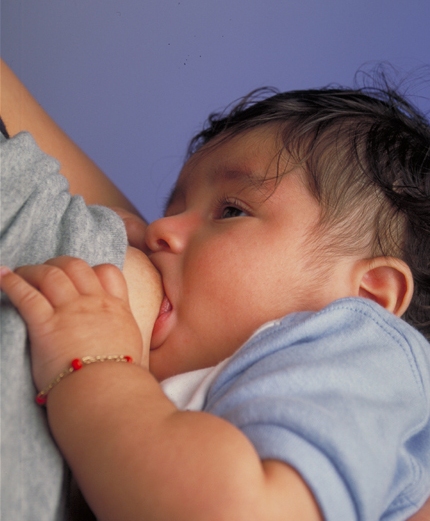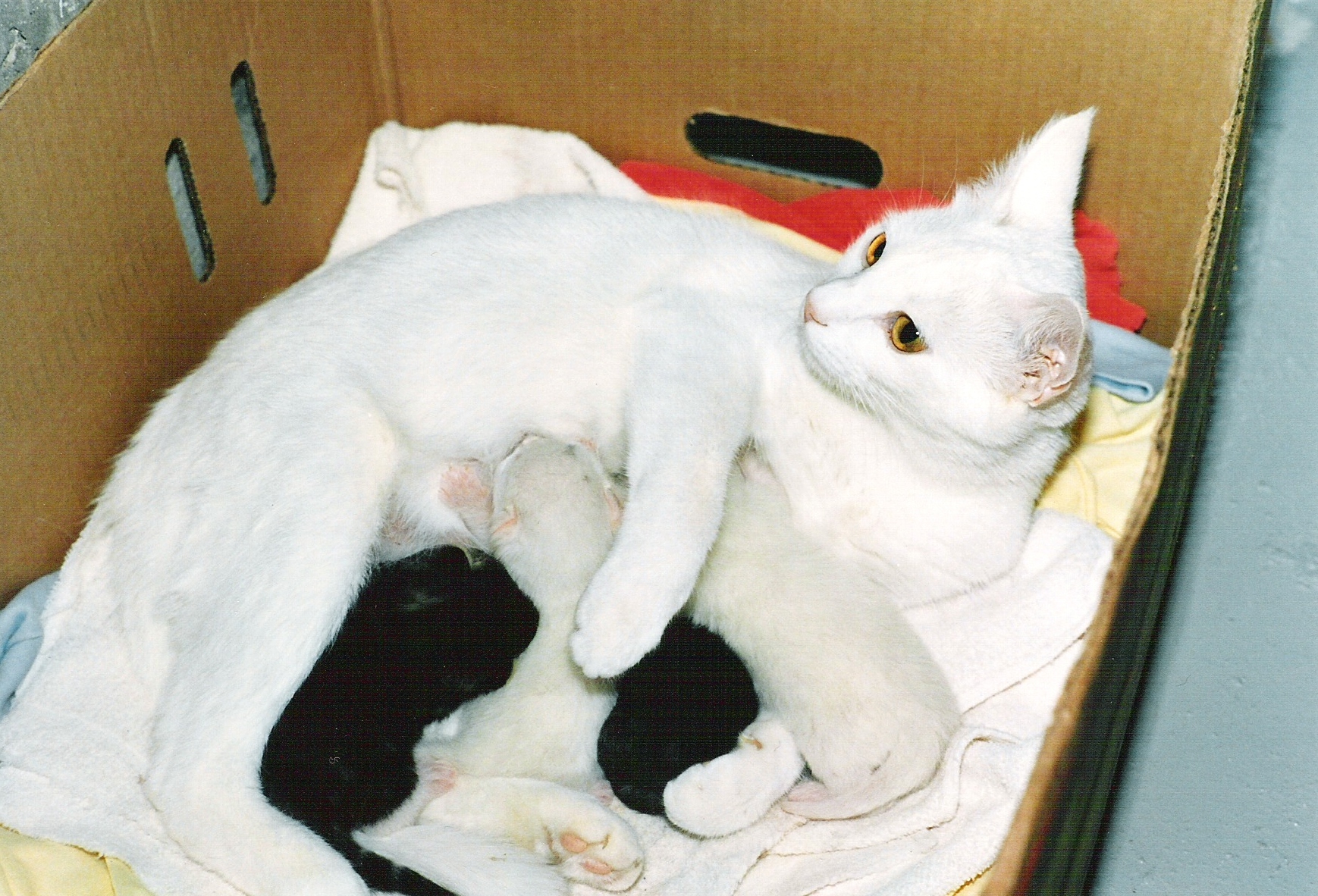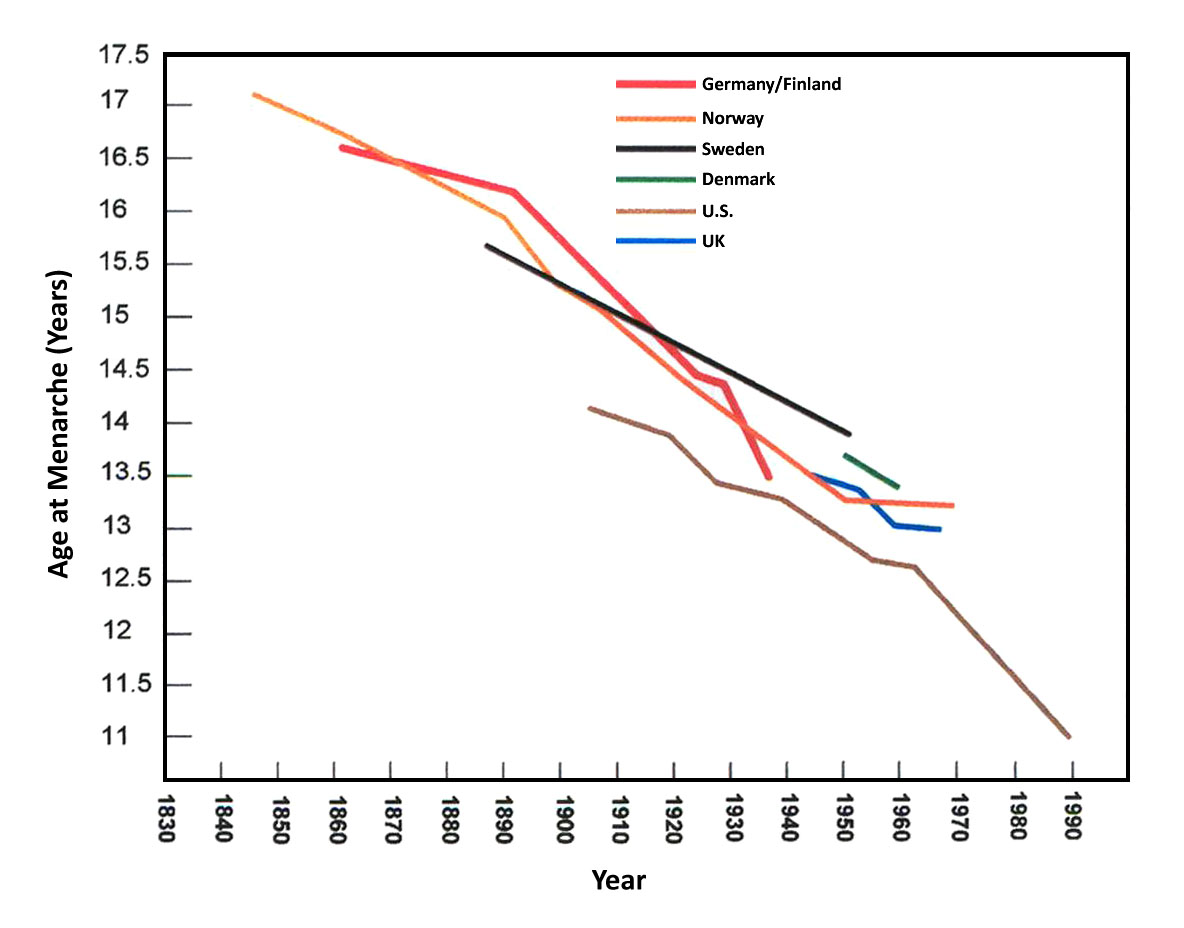|
Amenorrhea
Amenorrhea or amenorrhoea is the absence of a menstrual period in a female organism who has reached reproductive age. Physiological states of amenorrhoea are most commonly seen during pregnancy and lactation (breastfeeding). In humans, it is where a woman or girl who has reached reproductive age who is not on birth control does not menstruate. Amenorrhoea is a symptom with many potential causes. Primary amenorrhea is defined as an absence of secondary sexual characteristics by age 13 with no menarche or normal secondary sexual characteristics but no menarche by 15 years of age. It may be caused by developmental problems, such as the congenital absence of the uterus, failure of the ovary to receive or maintain egg cells, or delay in pubertal development. Secondary amenorrhoea, ceasing of menstrual cycles after menarche, is defined as the absence of menses for three months in a woman with previously normal menstruation, or six months for women with a history of oligomenorrhoea. I ... [...More Info...] [...Related Items...] OR: [Wikipedia] [Google] [Baidu] |
Lactational Amenorrhoea
Lactational amenorrhea, also called postpartum infertility, is the temporary postnatal infertility that occurs when a woman is amenorrheic (not menstruating) and fully breastfeeding. Physiology Hormonal pathways and neuroendocrine control Breastfeeding delays the resumption of normal ovarian cycles by disrupting the pattern of pulsatile release of gonadotropin-releasing hormone (GnRH) from the hypothalamus and hence luteinizing hormone (LH) from the pituitary. The plasma concentrations of follicle-stimulating hormone (FSH) during lactation are sufficient to induce follicle growth, but the inadequate pulsatile LH signal results in a reduced estradiol production by these follicles. When follicle growth and estradiol secretion does increase to normal, lactation prevents the generation of a normal preovulatory LH surge and follicles either fail to rupture, or become atretic or cystic. Only when lactation declines sufficiently to allow generation of a normal preovulatory LH surg ... [...More Info...] [...Related Items...] OR: [Wikipedia] [Google] [Baidu] |
Breastfeeding
Breastfeeding, also known as nursing, is the process where breast milk is fed to a child. Infants may suck the milk directly from the breast, or milk may be extracted with a Breast pump, pump and then fed to the infant. The World Health Organization (WHO) recommend that breastfeeding begin within the first hour of a baby's birth and continue as the baby wants. Health organizations, including the WHO, recommend breastfeeding exclusively for six months. This means that no other foods or drinks, other than vitamin D, are typically given. The WHO recommends exclusive breastfeeding for the first 6 months of life, followed by continued breastfeeding with appropriate complementary foods for up to 2 years and beyond. Of the 135 million babies born every year, only 42% are breastfed within the first hour of life, only 38% of mothers practice exclusive breastfeeding during the first six months, and 58% of mothers continue breastfeeding up to the age of two years and beyond. Breastfee ... [...More Info...] [...Related Items...] OR: [Wikipedia] [Google] [Baidu] |
Oligomenorrhea
Oligomenorrhea is characterised by infrequent menstrual periods. Generally, the menstrual periods occur at intervals of greater than 35 days, with fewer than 9 periods in a year, where previously there had been a regularly established pattern. The period may be light or short in duration, and irregular. Causes Oligomenorrhea can be a result of prolactinomas (adenomas of the anterior pituitary). It may be caused by thyrotoxicosis, hormonal changes in perimenopause, Prader–Willi syndrome, and Graves' disease. Endurance exercises such as running or swimming can affect the reproductive physiology of female athletes. Female runners, swimmers and ballet dancers either menstruate infrequently in comparison to non-athletic females of comparable age or exhibit amenorrhea. A more recent study shows that athletes competing in sports that emphasise thinness or a specific weight exhibit a higher rate of menstrual dysfunction than either athletes competing in sports with less focus on these ... [...More Info...] [...Related Items...] OR: [Wikipedia] [Google] [Baidu] |
Eating Disorders
An eating disorder is a mental disorder defined by abnormal eating behaviors that adversely affect a person's health, physical or mental health, mental health. These behaviors may include eating too much food or too little food. Types of eating disorders include binge eating disorder, where the person suffering keeps eating large amounts in a short period of time typically while not being hungry; anorexia nervosa, where the person has an intense fear of gaining weight and restricts food or overexercises to manage this fear; bulimia nervosa, where individuals eat a large quantity (binging) then try to rid themselves of the food (purging); pica (disorder), pica, where the patient eats non-food items; rumination syndrome, where the patient regurgitation (digestion), regurgitates undigested or minimally digested food; avoidant/restrictive food intake disorder (ARFID), where people have a reduced or selective food intake due to some psychological reasons; and a group of other specifi ... [...More Info...] [...Related Items...] OR: [Wikipedia] [Google] [Baidu] |
Turner Syndrome
Turner syndrome (TS), commonly known as 45,X, or 45,X0,Also written as 45,XO. is a chromosomal disorder in which cells of females have only one X chromosome instead of two, or are partially missing an X chromosome (sex chromosome monosomy) leading to the complete or partial deletion of the pseudoautosomal regions (PAR1, PAR2) in the affected X chromosome. Typically, people have two sex chromosomes (XX for females or XY for males). The chromosomal abnormality is often present in just some cells, in which case it is known as Turner syndrome with mosaicism. 45,X0 with mosaicism can occur in males or females, but Turner syndrome without mosaicism only occurs in females. Signs and symptoms vary among those affected but often include additional skin folds on the neck, arched palate, low-set ears, low hairline at the nape of the neck, short stature, and lymphedema of the hands and feet. Those affected do not normally develop menstrual periods or mammary glands without hormone trea ... [...More Info...] [...Related Items...] OR: [Wikipedia] [Google] [Baidu] |
Lactation
Lactation describes the secretion of milk from the mammary glands and the period of time that a mother lactates to feed her young. The process naturally occurs with all sexually mature female mammals, although it may predate mammals. The process of feeding milk in all female creatures is called ''nursing'', and in humans it is also called ''breastfeeding''. Newborn infants often produce some milk from their own breast tissue, known colloquially as witch's milk. In most species, lactation is a sign that the female has been pregnant at some point in her life, although in humans and goats, it can happen without pregnancy. Nearly every species of mammal has teats; except for monotremes, egg-laying mammals, which instead release milk through ducts in the abdomen. In only a handful of species of mammals, certain bat species, is milk production a normal Male lactation, male function. ''Galactopoiesis'' is the maintenance of milk production. This stage requires prolactin. Oxytocin is cr ... [...More Info...] [...Related Items...] OR: [Wikipedia] [Google] [Baidu] |
Luteinizing Hormone
Luteinizing hormone (LH, also known as luteinising hormone, lutropin and sometimes lutrophin) is a hormone produced by gonadotropic cells in the anterior pituitary gland. The production of LH is regulated by gonadotropin-releasing hormone (GnRH) from the hypothalamus. In females, an acute rise of LH known as an LH surge, triggers ovulation and development of the corpus luteum. In males, where LH had also been called interstitial cell–stimulating hormone (ICSH), it stimulates Leydig cell production of testosterone. It acts synergistically with follicle-stimulating hormone ( FSH). Etymology The term luteinizing comes from the Latin "luteus", meaning "yellow". This is in reference to the corpus luteum, which is a mass of cells that forms in an ovary after an ovum (egg) has been discharged. The corpus luteum is so named because it often has a distinctive yellow color. The process of forming the corpus luteum is known as " luteinization", and thus the hormone that triggers th ... [...More Info...] [...Related Items...] OR: [Wikipedia] [Google] [Baidu] |
Pure Gonadal Dysgenesis
Gonadal dysgenesis is classified as any congenital developmental disorder of the reproductive system characterized by a progressive loss of primordial germ cells on the developing gonads of an embryo. One type of gonadal dysgenesis is the development of functionless, fibrous tissue, termed streak gonads, instead of reproductive tissue. Streak gonads are a form of aplasia, resulting in hormonal failure that manifests as sexual infantism and infertility, with no initiation of puberty and secondary sex characteristics. Gonadal development is a process, which is primarily controlled genetically by the chromosomal sex ( XX or XY), which directs the formation of the gonad (ovary or testicle). Differentiation of the gonads requires a tightly regulated cascade of genetic, molecular and morphogenic events. At the formation of the developed gonad, steroid production influences local and distant receptors for continued morphological and biochemical changes. This results in the phenoty ... [...More Info...] [...Related Items...] OR: [Wikipedia] [Google] [Baidu] |
Menarche
Menarche ( ; ) is the first menstrual cycle, or first menstruation, menstrual bleeding, in female humans. From both social and medical perspectives, it is often considered the central event of female puberty, as it signals the possibility of fertility. Girls experience menarche at different ages, but the most common age is 12. Having menarche occur between the ages of 9–14 in the West is considered normal.US National Health Statistics Report September 2020 The timing of menarche is influenced by female biology, as well as Genetics, genetic, environmental factors, and nutritional factors. The mean age of menarche has declined over the last century, but the magnitude of the decline and the factors responsible remain subjects of contention. The worldwide average age of menarche is very difficult to estimate ... [...More Info...] [...Related Items...] OR: [Wikipedia] [Google] [Baidu] |
Pregnancy
Pregnancy is the time during which one or more offspring gestation, gestates inside a woman's uterus. A multiple birth, multiple pregnancy involves more than one offspring, such as with twins. Conception (biology), Conception usually occurs following sexual intercourse, vaginal intercourse, but can also occur through assisted reproductive technology procedures. A pregnancy may end in a Live birth (human), live birth, a miscarriage, an Abortion#Induced, induced abortion, or a stillbirth. Childbirth typically occurs around 40 weeks from the start of the Menstruation#Onset and frequency, last menstrual period (LMP), a span known as the Gestational age (obstetrics), ''gestational age''; this is just over nine months. Counting by Human fertilization#Fertilization age, ''fertilization age'', the length is about 38 weeks. Implantation (embryology), Implantation occurs on average 8–9 days after Human fertilization, fertilization. An ''embryo'' is the term for the deve ... [...More Info...] [...Related Items...] OR: [Wikipedia] [Google] [Baidu] |
Mixed Gonadal Dysgenesis
45,X/46,XY mosaicism, also known as X0/XY mosaicism and mixed gonadal dysgenesis, is a mutation of sex development in humans associated with sex chromosome aneuploidy and mosaicism of the Y chromosome. It is a fairly rare chromosomal disorder at birth, with an estimated incidence rate of about 1 in 15,000 live births. Mosaic loss of the Y chromosome in previously non-mosaic men grows increasingly common with age. The clinical manifestations are highly variable, ranging from partial virilisation and ambiguous genitalia at birth, to patients with completely male or female gonads. Most individuals with this karyotype have apparently normal male genitalia, and a minority have female genitalia, with a significant number of individuals showing genital abnormalities or mixed sex characteristics. A significantly higher than average number of other developmental abnormalities are also found in individuals with X0/XY mosaicism. Psychomotor development is normal. Signs and symptoms ... [...More Info...] [...Related Items...] OR: [Wikipedia] [Google] [Baidu] |
17β-hydroxysteroid Dehydrogenase Deficiency
A hydroxysteroid is a molecule derived from a steroid with a hydrogen replaced with a hydroxy group. When the hydroxy group is specifically at the C3 position, hydroxysteroids are referred to as sterols, with an example being cholesterol Cholesterol is the principal sterol of all higher animals, distributed in body Tissue (biology), tissues, especially the brain and spinal cord, and in Animal fat, animal fats and oils. Cholesterol is biosynthesis, biosynthesized by all anima .... See also * Hydroxysteroid dehydrogenase * Ketosteroid External links * Alcohols Steroids {{steroid-stub ... [...More Info...] [...Related Items...] OR: [Wikipedia] [Google] [Baidu] |






